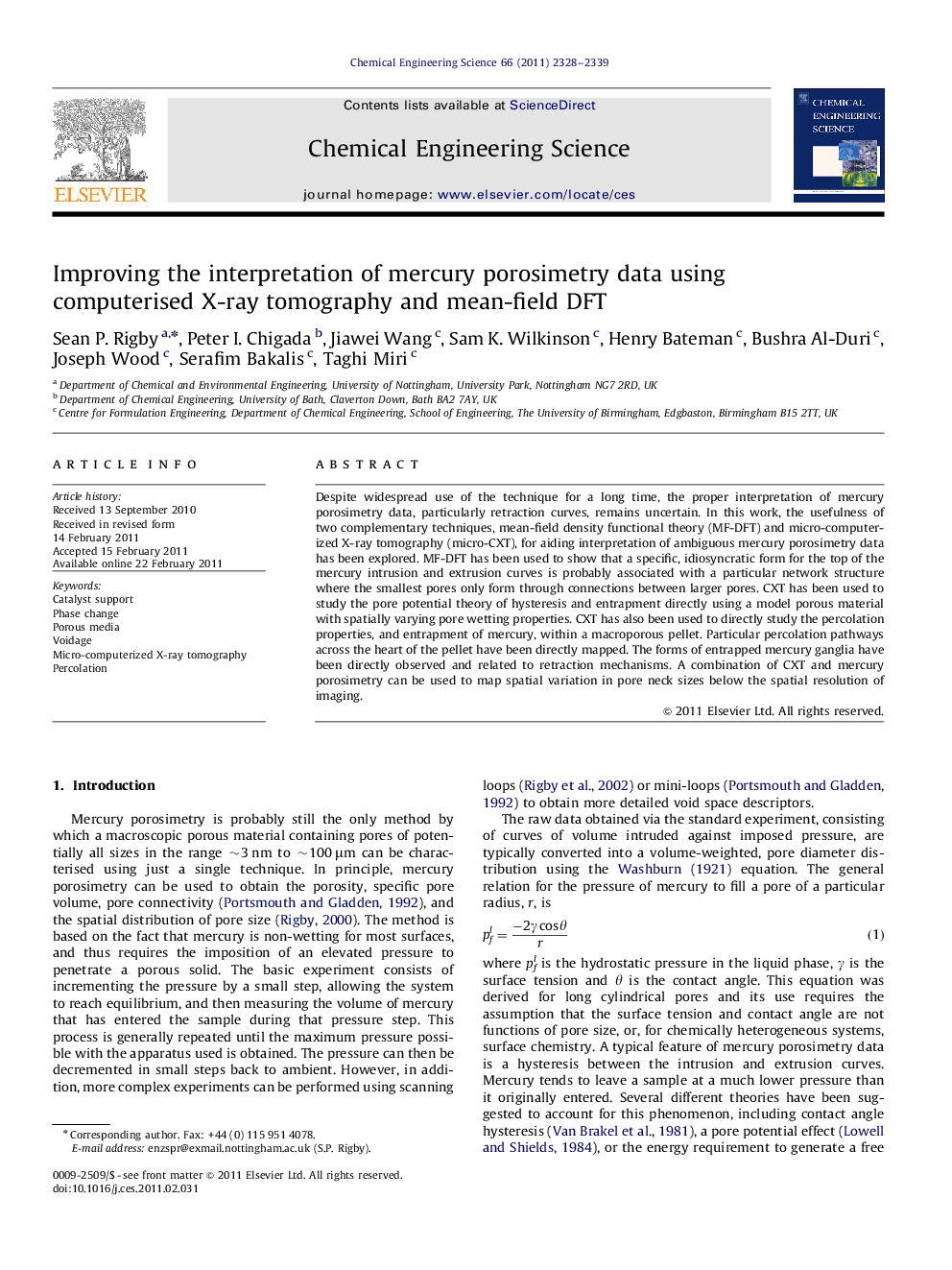| Article ID | Journal | Published Year | Pages | File Type |
|---|---|---|---|---|
| 156692 | Chemical Engineering Science | 2011 | 12 Pages |
Despite widespread use of the technique for a long time, the proper interpretation of mercury porosimetry data, particularly retraction curves, remains uncertain. In this work, the usefulness of two complementary techniques, mean-field density functional theory (MF-DFT) and micro-computerized X-ray tomography (micro-CXT), for aiding interpretation of ambiguous mercury porosimetry data has been explored. MF-DFT has been used to show that a specific, idiosyncratic form for the top of the mercury intrusion and extrusion curves is probably associated with a particular network structure where the smallest pores only form through connections between larger pores. CXT has been used to study the pore potential theory of hysteresis and entrapment directly using a model porous material with spatially varying pore wetting properties. CXT has also been used to directly study the percolation properties, and entrapment of mercury, within a macroporous pellet. Particular percolation pathways across the heart of the pellet have been directly mapped. The forms of entrapped mercury ganglia have been directly observed and related to retraction mechanisms. A combination of CXT and mercury porosimetry can be used to map spatial variation in pore neck sizes below the spatial resolution of imaging.
